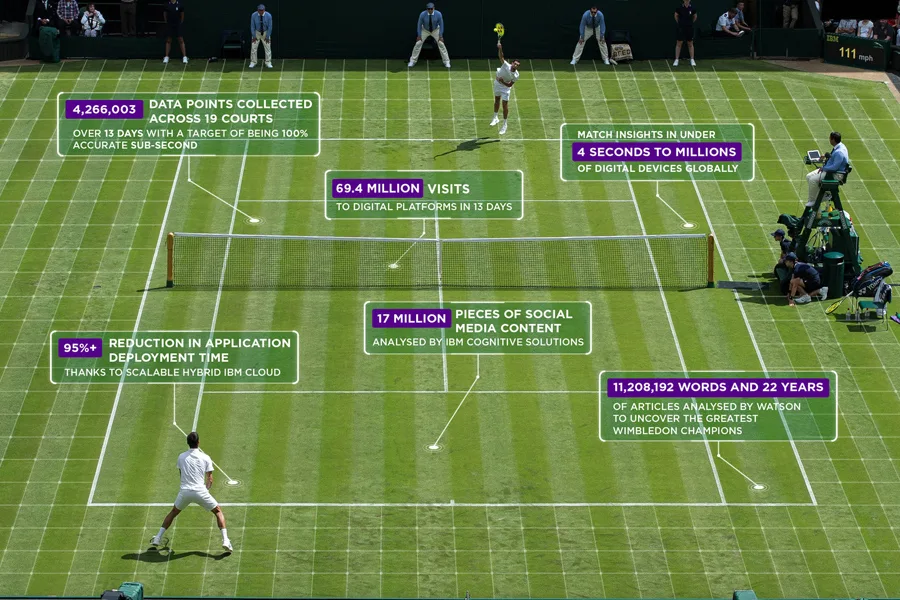The sports industry in 2025 is witnessing a technological transformation, with innovation redefining fan engagement and interaction. Key trends include the integration of Augmented and Virtual Reality (AR/VR), the rise of Artificial Intelligence (AI) for fan engagement, and the emergence of fan ownership models. Here’s how these trends are revolutionizing sports:
1. Augmented and Virtual Reality Enhancing Fan Experiences
AR and VR are bridging the gap between fans and live sports, offering immersive experiences that bring the action closer than ever. Major events like the Australian Open have embraced AR by introducing real-time animated feeds of matches on platforms like YouTube, transforming player movements into dynamic video game-like visuals.
Similarly, initiatives by organizations like the NBA and ESPN are leveraging VR and AR to create alternate broadcasts. For instance, an animated version of the Knicks-Spurs Christmas Day game was developed to attract younger audiences and enhance engagement. This trend is not limited to basketball; ESPN’s animated broadcasts of NFL games also incorporate familiar characters, blending sports with entertainment to captivate fans.

Such integrations highlight the growing influence of immersive technologies in reshaping how fans consume sports content, making it more interactive and tailored to diverse audience demographics.
2. AI-Powered Fan Engagement and Monetization
Artificial Intelligence is becoming a cornerstone of fan engagement strategies. According to a survey by Stats Perform, organizations utilizing AI find it three times easier to commercialize content compared to those relying on traditional methods. AI is driving personalization, automation, and storytelling, enabling sports entities to deliver tailored experiences to fans.
For example, AI-powered platforms like IBM Watson have been integrated into tennis tournaments such as Wimbledon to provide real-time match insights, player statistics, and even highlight reels personalized for fans. Similarly, AI-driven chatbots are being employed by teams like FC Barcelona to interact with fans, answer queries, and recommend merchandise, creating a seamless and engaging journey.

Automation tools powered by AI also enhance operational efficiency, freeing up resources for strategic initiatives. Storytelling, powered by AI algorithms, provides real-time insights and narratives during games, enriching the fan experience and building deeper connections.
3. Fan Ownership and Influence
Fan ownership models are gaining traction, offering supporters a stake and voice in their favorite sports organizations. This trend aligns with the broader move toward decentralization and democratization in sports.
A notable example is the German Bundesliga, where the 50+1 ownership rule ensures fans retain majority control over their clubs, fostering a strong sense of community and loyalty. Similarly, fan-owned clubs like AFC Wimbledon in England and Real Oviedo in Spain exemplify how supporters can have a direct impact on their teams’ operations and decision-making.
Through digital equity models and cooperative frameworks, fans can participate in decision-making processes, from voting on team jerseys to influencing charity partnerships. This approach fosters a sense of belonging and community, transforming passive spectators into active stakeholders.
Clubs exploring these models often leverage blockchain technology to ensure transparency and security in ownership structures. For example, Socios.com uses blockchain-based fan tokens to enable fans to vote on team-related matters, such as jersey designs and pre-game rituals. This innovation not only enhances fan loyalty but also opens new revenue streams by tapping into the growing demand for participatory experiences.
Conclusion
The convergence of AR/VR, AI, and fan ownership is ushering in a new era of fan engagement in sports. These technologies are not only enhancing the viewing experience but also empowering fans and creating more inclusive and personalized interactions. As these trends continue to evolve, the sports industry is set to become a dynamic and technology-driven ecosystem, where fans play an integral role in shaping the future of the game.


